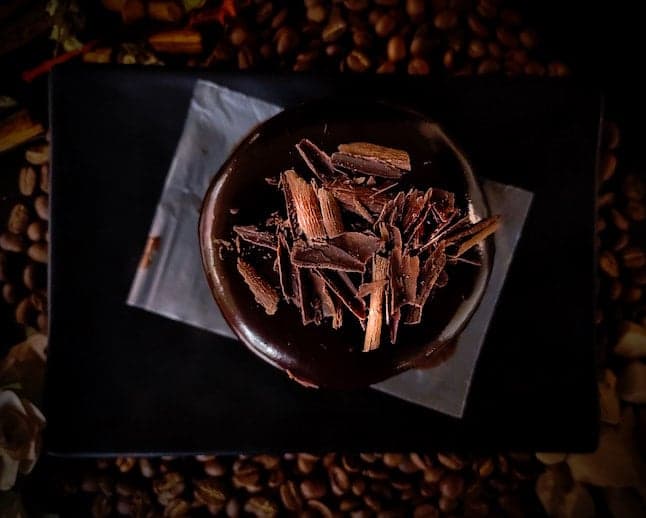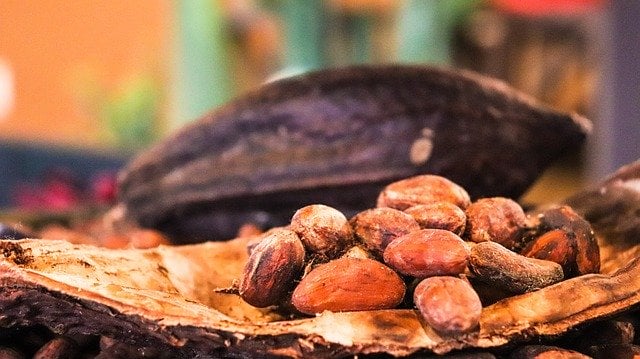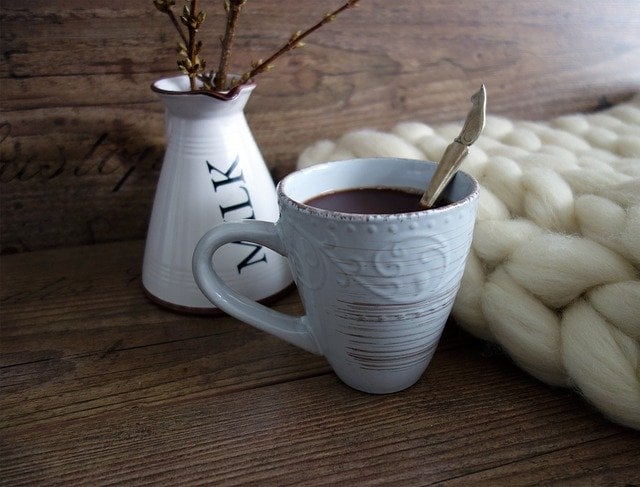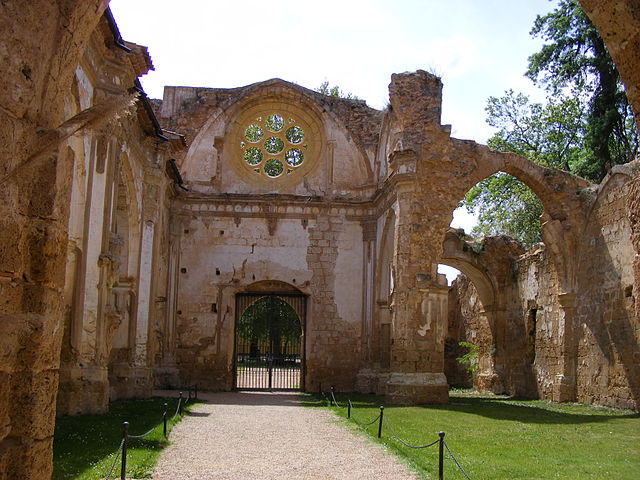How Spain invented modern chocolate – and kept it secret for 100 years

Most people associate chocolate with countries such as Belgium and Switzerland, but it wasn't these famous chocolate countries, where chocolate, as we know it today, was first made. It was in fact a small village in Aragon.
The Mayans and the Aztecs had known the secrets of the cacao bean for many years, but the way they consumed it was nothing like the chocolate we eat and drink today. It was spicy, bitter and made with corn.
It was of course Spain where chocolate first arrived from Southern and Central America, brought back by the explorers. It is thought that Christopher Columbus was the first person to bring cacao beans to Europe when he arrived back from his fourth visit to the region in 1504, but the explorer had far more exciting treasures on his ship than these beans, so they were mostly ignored.
Cacao beans and the Aztecs
It was in fact the explorer Hernán Cortés who was the first European to learn the true value of cacao beans, and brought many back with him to Spain in 1528. When Cortés arrived at the great Aztec capital of Tenochtitlán, his arrival happened to coincide with an Aztec prophecy that said that the God Quetzalcoatl would be sent to Earth.
Cortés was mistaken for the God and was received by the Aztecs with great honour. Cortés however didn't repay them with kindness, enslaved many of the natives and took over the city. When he found the royal treasury, he discovered that is was filled with cacao beans.

Cacao beans. Photo: ally j/Pixabay
The invention of chocolate as we know it today
Some of the very first cacao beans that Cortés brought back were sent to a monastery in Aragon, the Monasterio de Piedra, along with an Aztec recipe. The recipe was for a drink which contained cocoa beans, corn, water and chilli.
Upon finding this recipe too bitter, the monks at the monastery experimented by adding things such as sugar, milk, vanilla and cinnamon, to make it into the type of chocolate we know and love today. They also called it 'chocolate', which was a lot easier to pronounce than the Aztec word.
This new sweet hot drink became a favourite among the Spanish nobility, the priests and the monks, but the recipe was kept a closely guarded secret. The Spanish in fact, managed to keep chocolate a secret from the rest of Europe for a full 100 years, before it reached places such as France and the courts of Louis XVI.
Spain was also the place where the world's first chocolate factories were created. One of the first was actually in Barcelona.

The Spanish made chocolate thick, hot and sweet. Photo: Espressolia/Pixabay
Where to experience Spain's chocolate heritage
Monasterio de Piedra
To experience the true birthplace of chocolate, as we know it today, head to the Monasterio de Piedra in Aragon. It lies approximately 115 kilometres southwest of Zaragoza. At the monastery, visitors can learn all about the history of chocolate in the very kitchens where the first chocolate of its kind was invented all those years ago.
Zaragoza
Because of Aragon's connection to chocolate, the capital of Zaragoza is filled with many historic chocolate shops. Visitors can even buy a 'chocopass', enabling them to go on a tasting trail around some of the oldest chocolate shops in the city. It also allows entrance into the monastery.
Astorga
Located in Castilla y León, the town of Astorga lies right along the famed Camino de Santiago and has a strong connection with Spain's chocolate history. Hernan Cortés' daughter, María Cortés de Zúñiga, married the heir to the Marquisate of Astorga and a large part of her dowry was paid in cacao beans.
A local group known as the Maragato muleteers controlled the trade of cacao beans between Galicia and Madrid, and gave Astorga easy access. Popularity of chocolate grew in Astorga and by 1914 there were a total of 49 chocolate factories in the city. Visit today and you can learn all about it at the Museo del Chocolate in the city.

Monasterio de Piedra, Aragon. Photo: Alberto Pascual/WikiCommons
Barcelona
Visit Barcelona's grand Casa de Amatller to see the home of one of Barcelona's most famous chocolatier entrepreneurs – Antoni Amatller Costa (1851-1920). Amatller travelled around Spain and Europe visiting various chocolate factories and gaining new ideas, before inheriting his family's chocolate empire when he was just 25 years old.
Barcelona also has its own chocolate museum – the Museu de Xocolata, where you can learn all about Spain's chocolate history, but also get to see amazing sculptures made entirely out of chocolate.
Villajoyosa
One of Spain's oldest and most famous chocolate factories, which is still in use today, is the Valor, located in the Costa Blanca town of Villajoysa. Travellers can visit the old factory and its chocolate museum to learn all about this addictive sweet treat.
Comments (2)
See Also
The Mayans and the Aztecs had known the secrets of the cacao bean for many years, but the way they consumed it was nothing like the chocolate we eat and drink today. It was spicy, bitter and made with corn.
It was of course Spain where chocolate first arrived from Southern and Central America, brought back by the explorers. It is thought that Christopher Columbus was the first person to bring cacao beans to Europe when he arrived back from his fourth visit to the region in 1504, but the explorer had far more exciting treasures on his ship than these beans, so they were mostly ignored.
Cacao beans and the Aztecs
It was in fact the explorer Hernán Cortés who was the first European to learn the true value of cacao beans, and brought many back with him to Spain in 1528. When Cortés arrived at the great Aztec capital of Tenochtitlán, his arrival happened to coincide with an Aztec prophecy that said that the God Quetzalcoatl would be sent to Earth.
Cortés was mistaken for the God and was received by the Aztecs with great honour. Cortés however didn't repay them with kindness, enslaved many of the natives and took over the city. When he found the royal treasury, he discovered that is was filled with cacao beans.

Cacao beans. Photo: ally j/Pixabay
The invention of chocolate as we know it today
Some of the very first cacao beans that Cortés brought back were sent to a monastery in Aragon, the Monasterio de Piedra, along with an Aztec recipe. The recipe was for a drink which contained cocoa beans, corn, water and chilli.
Upon finding this recipe too bitter, the monks at the monastery experimented by adding things such as sugar, milk, vanilla and cinnamon, to make it into the type of chocolate we know and love today. They also called it 'chocolate', which was a lot easier to pronounce than the Aztec word.
This new sweet hot drink became a favourite among the Spanish nobility, the priests and the monks, but the recipe was kept a closely guarded secret. The Spanish in fact, managed to keep chocolate a secret from the rest of Europe for a full 100 years, before it reached places such as France and the courts of Louis XVI.
Spain was also the place where the world's first chocolate factories were created. One of the first was actually in Barcelona.

The Spanish made chocolate thick, hot and sweet. Photo: Espressolia/Pixabay
Where to experience Spain's chocolate heritage
Monasterio de Piedra
To experience the true birthplace of chocolate, as we know it today, head to the Monasterio de Piedra in Aragon. It lies approximately 115 kilometres southwest of Zaragoza. At the monastery, visitors can learn all about the history of chocolate in the very kitchens where the first chocolate of its kind was invented all those years ago.
Zaragoza
Because of Aragon's connection to chocolate, the capital of Zaragoza is filled with many historic chocolate shops. Visitors can even buy a 'chocopass', enabling them to go on a tasting trail around some of the oldest chocolate shops in the city. It also allows entrance into the monastery.
Astorga
Located in Castilla y León, the town of Astorga lies right along the famed Camino de Santiago and has a strong connection with Spain's chocolate history. Hernan Cortés' daughter, María Cortés de Zúñiga, married the heir to the Marquisate of Astorga and a large part of her dowry was paid in cacao beans.
A local group known as the Maragato muleteers controlled the trade of cacao beans between Galicia and Madrid, and gave Astorga easy access. Popularity of chocolate grew in Astorga and by 1914 there were a total of 49 chocolate factories in the city. Visit today and you can learn all about it at the Museo del Chocolate in the city.

Monasterio de Piedra, Aragon. Photo: Alberto Pascual/WikiCommons
Barcelona
Visit Barcelona's grand Casa de Amatller to see the home of one of Barcelona's most famous chocolatier entrepreneurs – Antoni Amatller Costa (1851-1920). Amatller travelled around Spain and Europe visiting various chocolate factories and gaining new ideas, before inheriting his family's chocolate empire when he was just 25 years old.
Barcelona also has its own chocolate museum – the Museu de Xocolata, where you can learn all about Spain's chocolate history, but also get to see amazing sculptures made entirely out of chocolate.
Villajoyosa
One of Spain's oldest and most famous chocolate factories, which is still in use today, is the Valor, located in the Costa Blanca town of Villajoysa. Travellers can visit the old factory and its chocolate museum to learn all about this addictive sweet treat.
Join the conversation in our comments section below. Share your own views and experience and if you have a question or suggestion for our journalists then email us at [email protected].
Please keep comments civil, constructive and on topic – and make sure to read our terms of use before getting involved.
Please log in here to leave a comment.